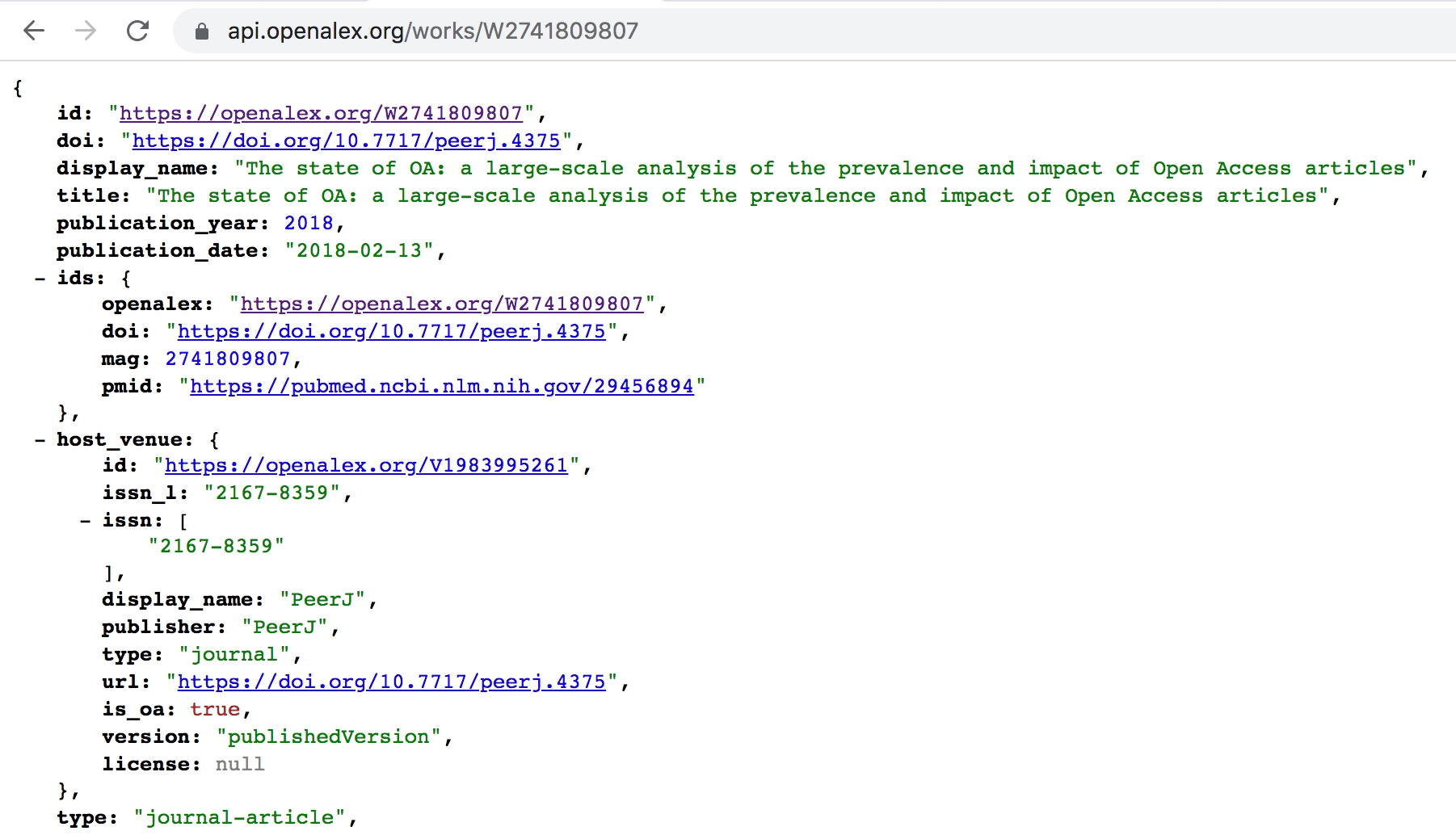Rate limits and authentication
The API is rate-limited. The limits are:
max 100,000 calls every day, and also
max 10 requests every second.
If you hit the API more than 100k times in a day or more than 10 in a second, you'll get 429 errors instead of useful data.
Are those rate limits too low for you? No problem! We can raise those limits as high as you need if you subscribe to our Premium plan. And if you're an academic researcher we can likely do it for free; just drop us a line at [email protected].
The polite pool
The OpenAlex API doesn't require authentication. However, it is helpful for us to know who's behind each API call, for two reasons:
It allows us to get in touch with the user if something's gone wrong--for instance, their script has run amok and we've needed to start blocking or throttling their usage.
It lets us report back to our funders, which helps us keep the lights on.
Like Crossref (whose approach we are shamelessly stealing), we separate API users into two pools, the polite pool and the common pool. The polite pool has more consistent response times. It's where you want to be.
To get into the polite pool, you just have to give us an email where we can contact you. You can give us this email in one of two ways:
Add the
[email protected]parameter in your API request, like this:https://api.openalex.org/[email protected]Add
mailto:[email protected]somewhere in your User-Agent request header.
Authentication
You don't need an API key to use OpenAlex. However, premium users do get an API key, which grants higher API limits and enables the use of special filters like from_updated_date. Using the API key is simple; just add it to your URL using the api_key param.
Get a list of all works, using the api key 424242:
https://api.openalex.org/works?api_key=424242
Usage tips
Calling the API in your browser
Because the API is all GET requests without fancy authentication, you can view any request in your browser. This is a very useful and pleasant way to explore the API and debug scripts; we use it all the time.
However, this is much nicer if you install an extension to pretty-print the JSON; JSONVue (Chrome) and JSONView (Firefox) are popular, free choices. Here's what an API response looks like with one of these extensions enabled:

Last updated